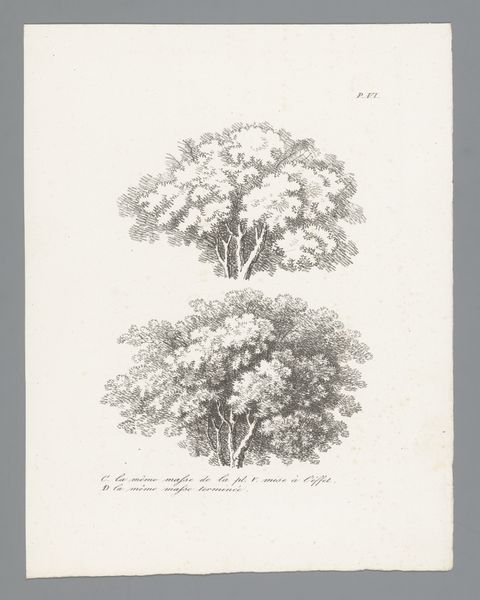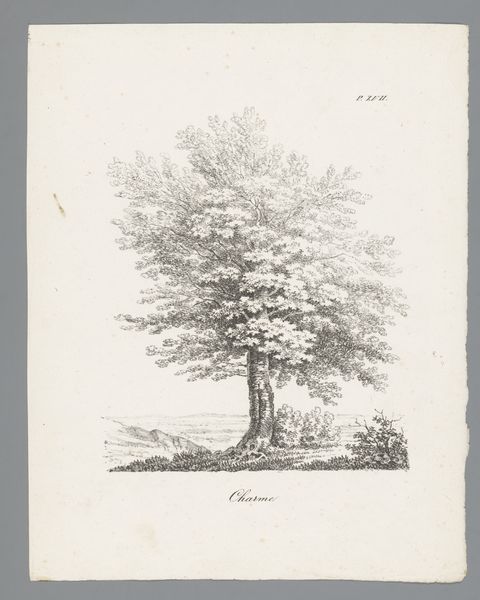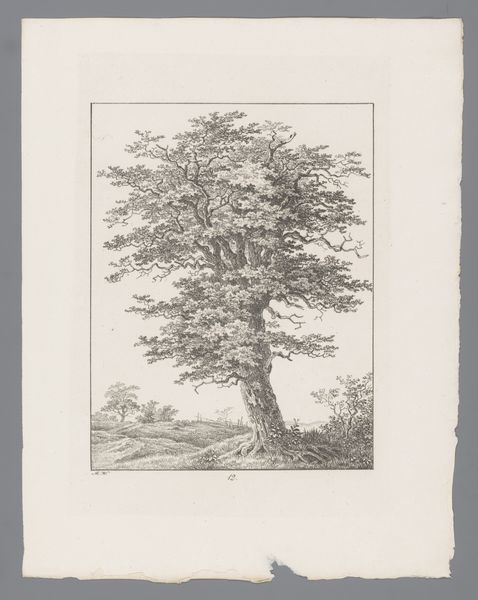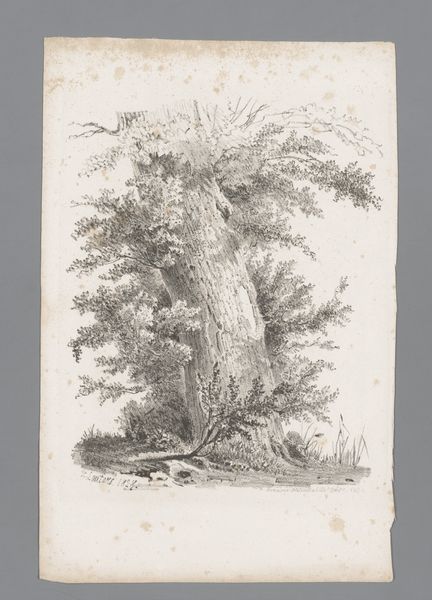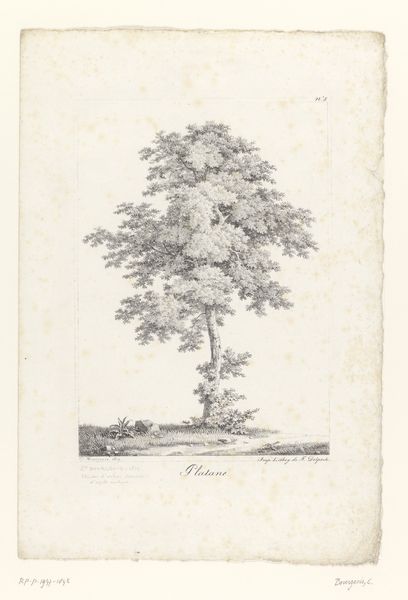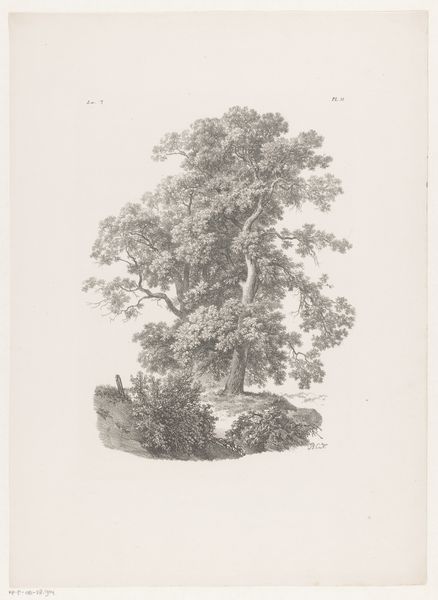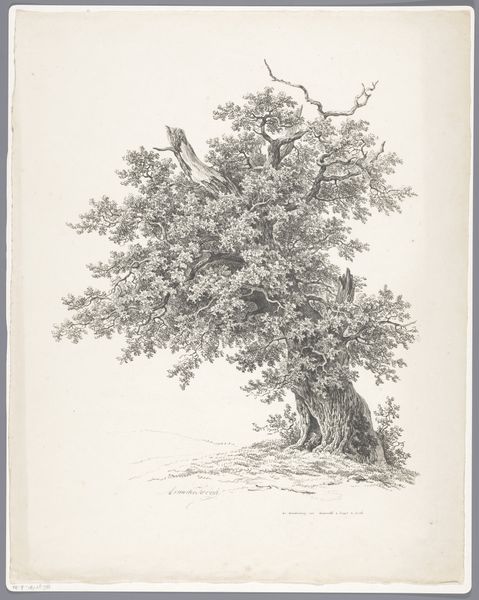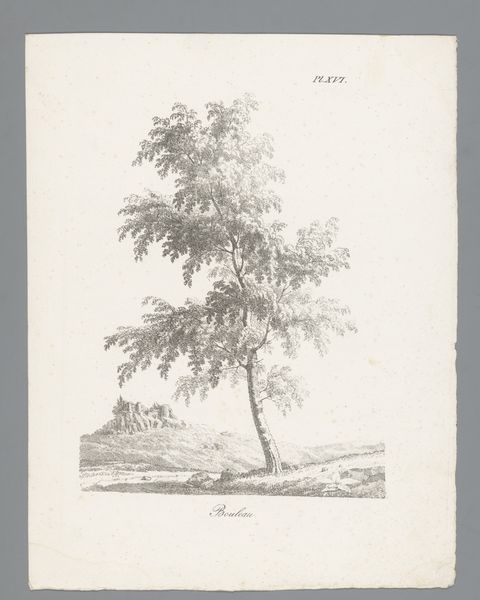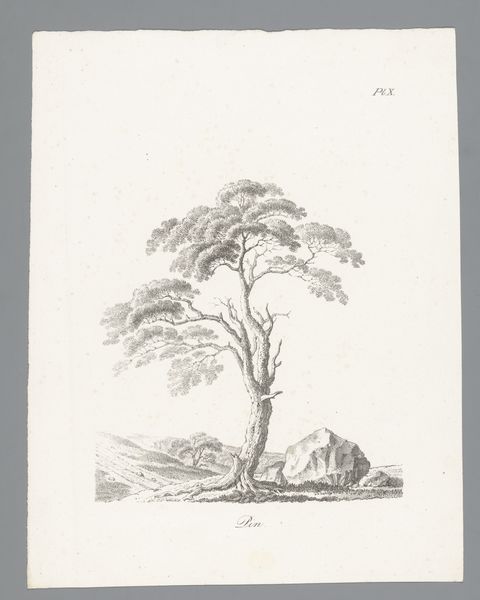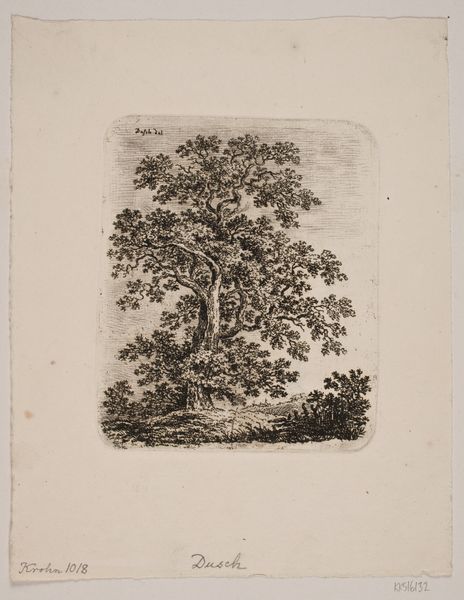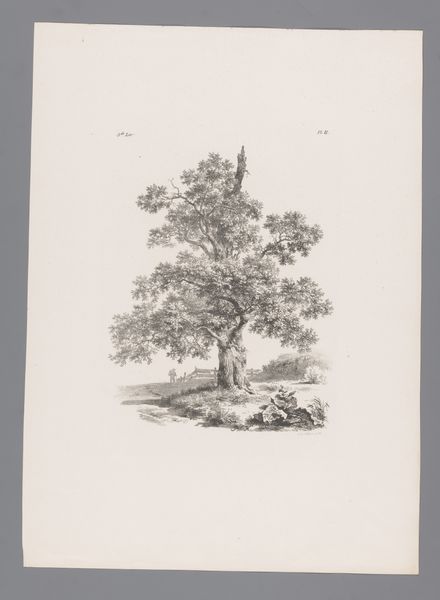
drawing, print, engraving
#
drawing
# print
#
landscape
#
romanticism
#
engraving
Dimensions: height 305 mm, width 232 mm
Copyright: Rijks Museum: Open Domain
Editor: This engraving, "Toppen van een haagbeuk en een eik," or "Tops of a Hornbeam and an Oak" by J. Bernard, was made sometime between 1820 and 1833. The detail is really striking, but it’s also quite…clinical? What do you see in the pairing of these particular trees? Curator: I’m drawn to the pairing itself. The hornbeam, "masse de charme," suggesting charm or enchantment, sits above the oak, "masse de chêne," a symbol of strength and endurance. Don't you find that placement suggestive? It flips conventional ideas of dominance and fragility, no? Editor: That's an interesting point! I was stuck on the scientific quality of the image, but this introduces an almost allegorical quality. Curator: Precisely! In Romanticism, nature isn't merely observed, it's imbued with meaning. The hornbeam’s ‘charm’ might represent an enlightened ideal hovering over, subtly guiding, the oak's grounded strength. What cultural narratives might this pairing evoke, do you think? Editor: Perhaps it speaks to a shift in power, where intellect or grace are valued above brute force? Or maybe a desire for harmony between these qualities? Curator: Or perhaps a yearning for the ethereal to guide the steadfast in a time of societal upheaval. The Romantic era grappled with industrialization, you know. Do you suppose that this tension informs Bernard’s delicate rendering? Editor: It definitely gives me a fresh perspective on what I initially dismissed as a purely botanical illustration. Curator: Visual symbols are never truly neutral, wouldn't you agree? Especially those chosen for prominence by an artist. Editor: Definitely food for thought. I’ll be looking at botanical art differently now!
Comments
No comments
Be the first to comment and join the conversation on the ultimate creative platform.
